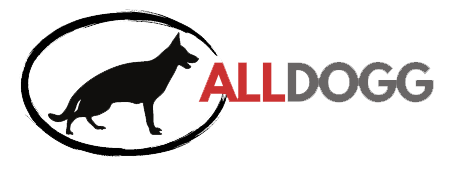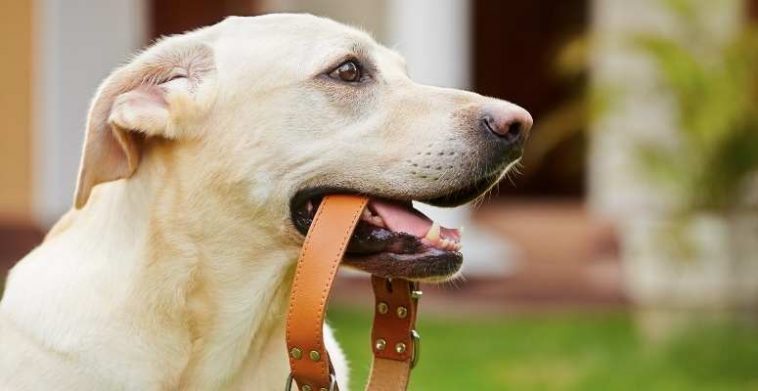6 Types Of Dog Collars: What To Consider
Table of Contents
Dog collars are important tools in the rearing of your pet. The many different types of dog collars may be a little confusing to sift through.
It’s vital that you take into consideration factors such as whether your dog is bigger or smaller in stature, whether they’re more on the playful and energetic side, and what you hope to gain from training your furry companion.
Still a little uncertain on what kind of collar is best for your dog? Take a moment to assess the list below in order to select the one most suited to your needs.
Different Types of Dog Collars
Collars have a lot of uses rather than just something to attach your leash to. Before you purchase a collar, it’s important to think about a number of things that pertain to your dog and you.
1. Everyday flat collars
Standard everyday collars – also known as flat collars – are the ones you’ve probably seen on the majority of pets you come across. These come with a metal buckle that quickly releases the collar in order to open or tighten it. The buckles work well on big dogs since they’re sturdier and will hold longer.
When it comes to choosing the right flat collar for your dog, there are a few things you need to take into account.
- The first is the size of your dog-you want to make sure the collar is not too tight or too loose.
- Second, you’ll need to decide what type of material you want the collar to be made out of. Leather, nylon or fabric are all popular choices.
- And finally, you’ll need to choose a style that fits your dog’s personality and needs.
There are so many different types of flat collars available on the market today, so take your time and find the perfect one for your furry friend!
Nylon flat collar: One of the most popular and common flat collars on the market today is made out of nylon. Nylon collars are lightweight, strong and water-resistant so they can easily handle your dog’s daily activities such as walks in the woods or a swim at the local pond.
The flat collar comes with either metal or plastic buckles which both come with a safety lock to prevent your dog from slipping out of the collar. Many of these collars come in various colors and designs so you can easily find one that meets your needs as well as your dog’s personality!
Leather flat collars: Another popular choice for flat collars is made out of leather. Since leather is a natural material, it’s long-lasting, durable and strong. Some owners choose to purchase leather flat collars because they last longer than fabric ones which are more susceptible to wear, tear and fading.
Fabric flat collars: Another type of flat collar that’s gaining popularity is made out of fabric. Fabric flat collars are lightweight, comfortable and soft on your dog’s neck. They also come with either metal or plastic buckles but they tend to be slightly less durable than nylon or leather ones.
Country Brook Design – Nylon Dog Collar with Metal Buckle
Everyday flat collars may also be personalized by adding a chain or a nameplate with your pet’s moniker on it. When it comes to these collars, choose either a metal or nylon one, since these are the most durable of materials.
2. Chain slip collars
It’s crucial to note that chain slip collars are used solely for training purposes and should not be kept on for long stretches of time. These are chain link collars that are also known as choke chains, because they tighten around the dog’s neck area when pulled on a leash. When used correctly, chain slip collars are an effective training tool, but can cause injuries if used incorrectly.
Generally made of metal links with a metal chain in the middle, chain slip collars are similar to regular dog collars, except they have an extra link at one end. That additional link serves as an attachment point for leash.
They can be used when walking your dog, during field work training, and during behavior modification sessions with the goal of discouraging bad behaviors or encouraging good ones.
SGODA Chain Dog Training Choke/Slip Collar
These collars can be useful when teaching a dog how to go on walks, but it can be damaging to your pet if utilized too frequently. When using a chain slip collar, make sure that you put it on properly and you do not leave it on your dog without supervision.
3. Metal prong collars
Metal prong collars are similar in nature to chain slip ones, except that they come with blunt metal prongs lining the inside of the collar. These are meant to dig into the dog’s neck when pulled, and are also used for training. These are super effective training tools, but not meant to be left on all the time.
Herm SPRENGER Ultra-Plus Prong Dog Training Collar
he Herm. Sprenger Ultra-Plus Prong Dog Training Collar is safe, practical and easy to use. This training collar features a solid fastener plate that provides a more secure connection making fastening the collar around your dog’s neck easier and safer. Tur pup with 26 rich, fashionable colors and mirror-like metal hardware. The classic style of this collar looks cute on both boy and girl dogs.
Some pet owners may find this effective in calming down bigger dogs that are more aggressive in nature. However, they should not be used on the daily and should be handled with caution.
4. Martingale collars
The martingale collar is named for its origin in France, where it was used to hunt wild dogs. The collar would tighten around the dogs neck if they attempted to escape but not cut off their air and potentially strangle them.
Today, a typical martingale collar fits just like a regular dog collar, with one notable exception: there are two loops. One loop is placed around the neck of the dog, and the other loop tightens when the dog pulls against it. The tightening loop should not tighten down past a couple inches to ensure that your dog can breathe properly. Over tightening can also cause choking or even damage to your dogs trachea.
Martingale collars are great for dogs with smaller heads and necks. They work by tightening around your pup’s neck when pulled, but have an automatic stop latch so they don’t get too tight in areas where it would hurt them most like their chest area (or throat). These can also serve as a substitute to standard leashes if you need one that goes beyond just walking or running outside! They tend to be more comfortable than the training collars and can be used as a substitute for the standard collar.
They are often recommended for puppies or dogs that are still growing, as they will not be able to slip out of the collar as easily. If you are unsure whether or not a martingale collar is right for your puppy, consult with your veterinarian.
These types of collars can also be personalized and customized.
Country Brook Petz Martingale Nylon Dog Collar
5. Smart collars
These handy devices will turn your dog into a literal GPS, with features that come with the collar such as the ability to track your dog’s location, monitor their heart rate and breathing patterns, and offer assistance in training your pet.
Some smart collars also come with an app that can be accessed on a smart phone, so that you can get a full read on your dog while you’re out and about. There are even waterproof options available.
6. Head collars
Head collars may resemble a traditional muzzle at first, but their usage varies. These types of collars act more like harnesses to support the head while training a dog to walk with a leash. When the dog pulls on the leash, the head collar will force the head to turn, making the dog uncomfortable and refrain from doing so again. When used properly, head collars are a great means of discouraging the tugging of leashes, especially when out in public.
There are many different types of dog collars for all types of dogs and situations. Do the research necessary to make sure you choose the right kind of collar for your particular dog.
Sign up for our AllDogg newsletter and stay up-to-date on working dog information, gear and more! (Be sure to follow us on Facebook and Pinterest!)






